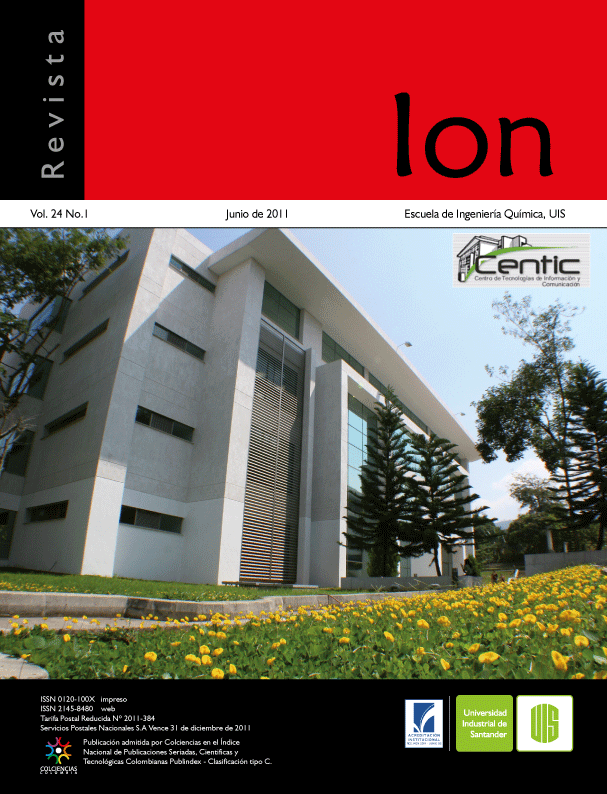Cómo citar
Resumen
Resumen
El propósito de la presente investigación fue evaluar la resistencia a la compresión y la porosidad en muestras de concreto empleando medidas de velocidad de pulso ultrasónico (VPU) y posteriormente establecer relaciones entre las propiedades estudiadas y la VPU. Las muestras fueron preparadas con diferentes relaciones agua/cemento (a/c) y curadas durante 28 días en condiciones ambientales bajo techo. El trabajo se planteó teniendo en cuenta que la porosidad es un factor importante que influye en el material, ya que permite el ingreso de agentes agresivos dentro de la matriz del concreto afectando su resistencia a la compresión, y en general disminuyendo el tiempo de vida útil proyectado para la estructura. Estudios anteriores han demostrado que la porosidad depende entre otros factores de la relación a/c empleada en la mezcla. Uno de los métodos para evaluar las estructuras sin afectarlas es el ultrasonido, por medio de este se puede estimar la resistencia mecánica tanto in situ como en laboratorio. La técnica ultrasónica de mayor aplicación es la de VPU. En el presente trabajo se midió la resistencia a la compresión, la porosidad y la VPU a probetas de concreto fabricadas con cemento Portland tipo I y relaciones a/c de 0,45, 0,50, 0,55 y 0,60. Los experimentos fueron llevados a cabo a 7, 14 y 28 días de curado. Este primer trabajo acerca de la aplicación de la técnica de VPU como ensayo no destructivo para la evaluación de la calidad del concreto, permitió verificar el potencial de la técnica como medio para estimar el comportamiento del material durante el tiempo de este estudio.
Palabras Clave: pruebas no destructivas, velocidad de pulso ultrasónico, durabilidad
Abstract
The purpose of this research was to evaluate the compressive strength and porosity of concrete samples using ultrasonic pulse velocity (UPV) measurements and then establish relationships between the studied properties and the UPV. The samples were prepared with different water/cement ratios (w/c) and cured for 28 days at indoor environmental conditions. This work was raised taking into account that porosity is an important factor that influences the material, allowing aggressive agents to enter the concrete matrix affecting its compressive strength, and in general decreasing the projected lifetime of the structure. Previous studies have proved that porosity strongly depends on the water/cement ratio (w/c) used for the mixture. One method to evaluate structures without affecting them is ultrasounds. Through this technique, mechanical resistance can be estimated both in situ and in laboratory. The ultrasonic technique that is widely used is the ultrasonic pulse velocity (UPV). In this paper the compressive strength, the porosity, and the ultrasonic pulse velocity were measured in concrete test tubes manufactured with Portland cement type I, using water/cement ratios of 0.45, 0.50, 0.55, and 0.60. The experiments were carried out at 7, 14 y 28 curing days. This first work about UPV technique application as a non-destructive testing for assessing concrete quality, allowed studying the potential of technique itself, as a means to estimate the material behavior, in this case during the curing stage under environment conditions.
Keywords: nondestructive testing, ultrasonic pulse velocity, durability

